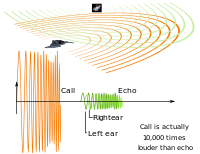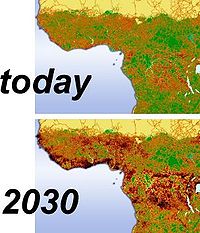
Practice does not make perfect: Juvenile object play does not improve the predation skills of adult mink in "simulated prey" tests.
Sign Up to like & getrecommendations! Published in 2022 at "Developmental psychobiology"
DOI: 10.1002/dev.22268
Abstract: In carnivores, juvenile object play is hypothesized to improve the development of adult predation ability. We tested this hypothesis in a model carnivore, the American mink (Neovison vison). Play was induced via the provision of… read more here.
Keywords: simulated prey; object play; predation; play ... See more keywords

Predation of Daurian redstarts offspring in nest boxes by the Oriental magpie‐robin and tree sparrow
Sign Up to like & getrecommendations! Published in 2023 at "Ecology and Evolution"
DOI: 10.1002/ece3.10093
Abstract: Abstract Birds select suitable nest sites for breeding to ensure their own and offspring's survival; however, they inevitably suffer some potential predation risk. We studied the breeding ecology of Daurian redstarts (Phoenicurus auroreus) by providing… read more here.
Keywords: oriental magpie; ecology; nest boxes; predation daurian ... See more keywords

Refuge or predation risk? Alternate ways to perceive hiker disturbance based on maternal state of female caribou
Sign Up to like & getrecommendations! Published in 2017 at "Ecology and Evolution"
DOI: 10.1002/ece3.2672
Abstract: Abstract Human presence in natural environments is often a source of stress that is perceived by large ungulates as an increased risk of predation. Alternatively, disturbance induced by hikers creates a relatively predator‐free space that… read more here.
Keywords: predation risk; risk; presence; female caribou ... See more keywords

Habitat formation prevails over predation in influencing fouling communities
Sign Up to like & getrecommendations! Published in 2018 at "Ecology and Evolution"
DOI: 10.1002/ece3.3654
Abstract: Abstract Coastal human‐made structures, such as marinas and harbors, are expanding worldwide. Species assemblages described from these artificial habitats are novel relative to natural reefs, particularly in terms of the abundance of nonindigenous species (NIS).… read more here.
Keywords: habitat complexity; complexity; abundance; species interactions ... See more keywords

Diel patterns of predation and fledging at nests of four species of grassland songbirds
Sign Up to like & getrecommendations! Published in 2021 at "Ecology and Evolution"
DOI: 10.1002/ece3.7541
Abstract: Abstract Although it is common for nestlings to exhibit a strong bias for fledging in the morning, the mechanisms underlying this behavior are not well understood. Avoiding predation risk has been proposed as a likely… read more here.
Keywords: risk; diel; predation; period ... See more keywords

Semi‐intensive shrimp farms as experimental arenas for the study of predation risk from falcons to shorebirds
Sign Up to like & getrecommendations! Published in 2021 at "Ecology and Evolution"
DOI: 10.1002/ece3.8059
Abstract: Abstract Varying environmental conditions and energetic demands can affect habitat use by predators and their prey. Anthropogenic habitats provide an opportunity to document both predation events and foraging activity by prey and therefore enable an… read more here.
Keywords: predation risk; risk; intensive shrimp; predation ... See more keywords

Beyond the encounter: Predicting multi‐predator risk to elk (Cervus canadensis) in summer using predator scats
Sign Up to like & getrecommendations! Published in 2022 at "Ecology and Evolution"
DOI: 10.1002/ece3.8589
Abstract: Abstract There is growing evidence that prey perceive the risk of predation and alter their behavior in response, resulting in changes in spatial distribution and potential fitness consequences. Previous approaches to mapping predation risk across… read more here.
Keywords: predation risk; predation; predator; scat based ... See more keywords

Predator cannibalism can shift prey community composition toward dominance by small prey species
Sign Up to like & getrecommendations! Published in 2022 at "Ecology and Evolution"
DOI: 10.1002/ece3.8894
Abstract: Abstract Cannibalism among predators is a key intraspecific interaction affecting their density and foraging behavior, eventually modifying the strength of predation on heterospecific prey. Interestingly, previous studies showed that cannibalism among predators can increase or… read more here.
Keywords: insects; cannibalism; predation; cannibalism among ... See more keywords

Camera trap data suggest uneven predation risk across vegetation types in a mixed farmland landscape
Sign Up to like & getrecommendations! Published in 2022 at "Ecology and Evolution"
DOI: 10.1002/ece3.9027
Abstract: Abstract Ground‐nesting farmland birds such as the grey partridge (Perdix perdix) have been rapidly declining due to a combination of habitat loss, food shortage, and predation. Predator activity is the least understood factor, especially its… read more here.
Keywords: farmland; predation risk; vegetation; predation ... See more keywords

Did extreme nest predation favor the evolution of obligate brood parasitism in a duck?
Sign Up to like & getrecommendations! Published in 2022 at "Ecology and Evolution"
DOI: 10.1002/ece3.9251
Abstract: Abstract Obligate brood parasites depend entirely on other species to raise their offspring. Most avian obligate brood parasites have altricial offspring that require enormous amounts of posthatching parental care, and the large fecundity boost that… read more here.
Keywords: obligate brood; brood; parasitism; duck ... See more keywords

Annual variation in breeding success in boreal forest grouse: Four decades of monitoring reveals bottom‐up drivers to be more important than predation
Sign Up to like & getrecommendations! Published in 2022 at "Ecology and Evolution"
DOI: 10.1002/ece3.9327
Abstract: Abstract Knowledge of the temporal variation in reproductive success and its key driving factors is crucial in predicting animal population persistence. Few studies have examined the effects of a range of explanatory factors operating simultaneously… read more here.
Keywords: success; predation; boreal forest; variation breeding ... See more keywords